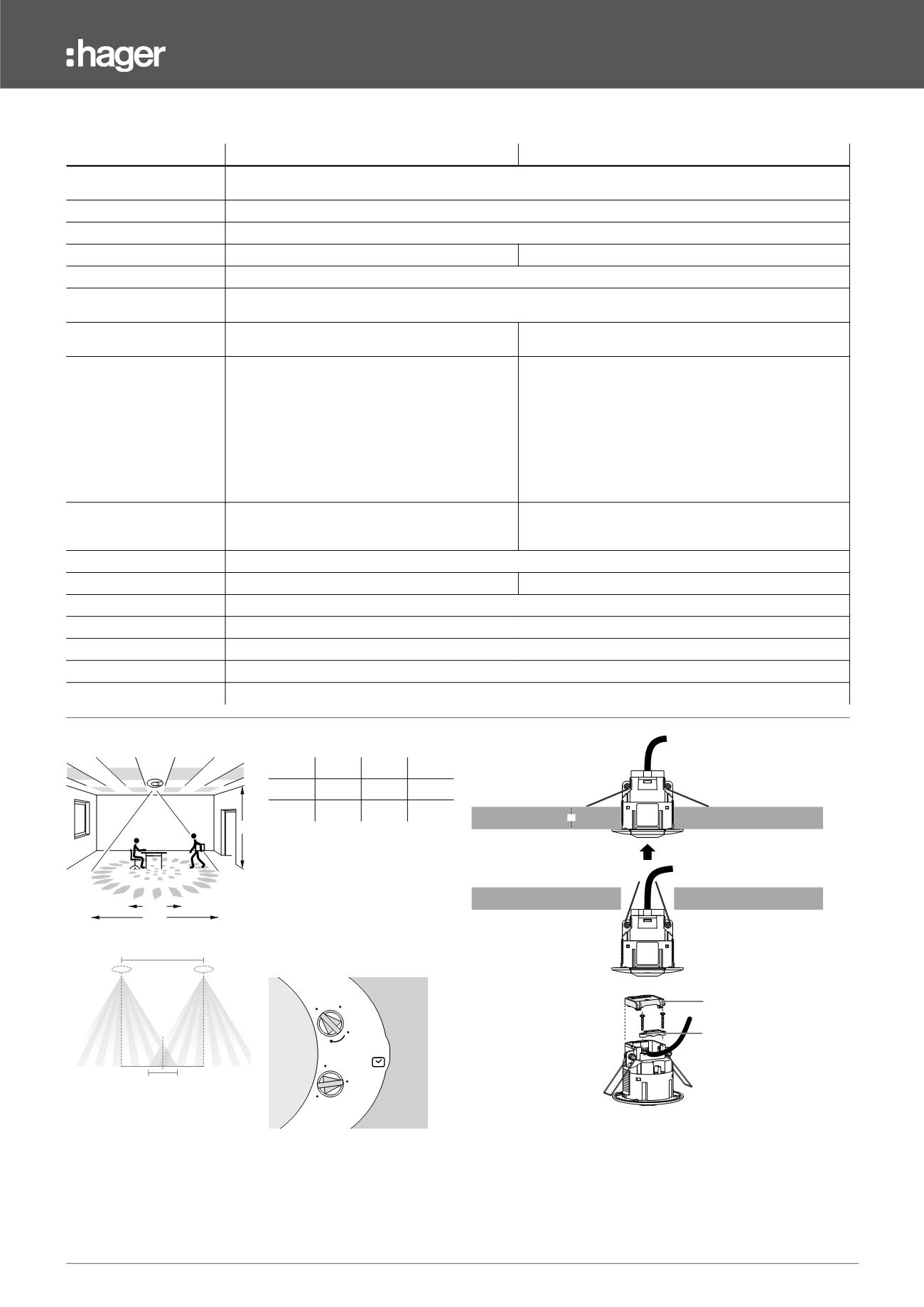

3.32
Data is subject to errors and technical modifications.
Lighting, Connection
& Control
Klik 7 Pin
Occupancy Sensors
EEK513P / EEK515P
EEK523P / EEK525P
Detection range
Motion area: diameter 7m (product installed at 2½m height)
Presence area: diameter 5m (product installed at 2½m height)
Supply voltage
230 V AC + 10% -15%
Frequency
50/60 Hz
Local lux threshold setting
5 to 1000 lux
3 modes available
Local time setting
1 min to 1hr
Commissioning via installer
remote control
EEK001 for power up, absence / presence mode, timer active / passive cell
Control with IR user remote
control
EEK002 for ON / OFF override
EEK002 for ON / OFF override and dimming up / down
Output
16A AC1 relay output (cut live):
- 2300W incandescent or 230V halogen:
> 26000 cycles
- 1500W VLV halogen lamps with ferromagnetic or
electronic transformer:
> 35000 cycles
- 1000W / 130 μF parallel compensated fluo tube: >
50000 cycles
-23 x 23W fluo-compact with electronic ballast: > 20000
cycles
14V / 50mA (for a DALI bus with 24 ballasts)
- No isolation between the mains and the DALI bus
Push button input
Phase input for absence / presence detection (semi-auto-
matic / automatic mode)
same phase as power supply.
To dim up / down and absence / presence detection (semi-
automatic / automatic mode) same phase as power supply.
Terminals
for 1.5mm
2
rigid / flexable wires
Power dissipation
300mW
60mW
Isolation class
II
Protection
IP41 / IK03
Operating temperature
-10ºC to +45ºC
Storage temperature
-20ºC to +60ºC
Standards
IEC 60669-1, IEC 60669-2-1
Technical Characteristics
h
x
y
D
S
5m
1m
2.5m
2.5m
auto
test
1min
1h
20min
1
on
2
lux
t
H 2.5m 3m 3.5m
X
5m 5m 5m
Y 7m 8m 9m
Detection areas
Settings EEK513P/EEK515P
EEK523P/EEK525P
Mounting
ceiling
protective cover
cable clamp
10 < t < 28mm
For
programming and control see page
3.24.

















